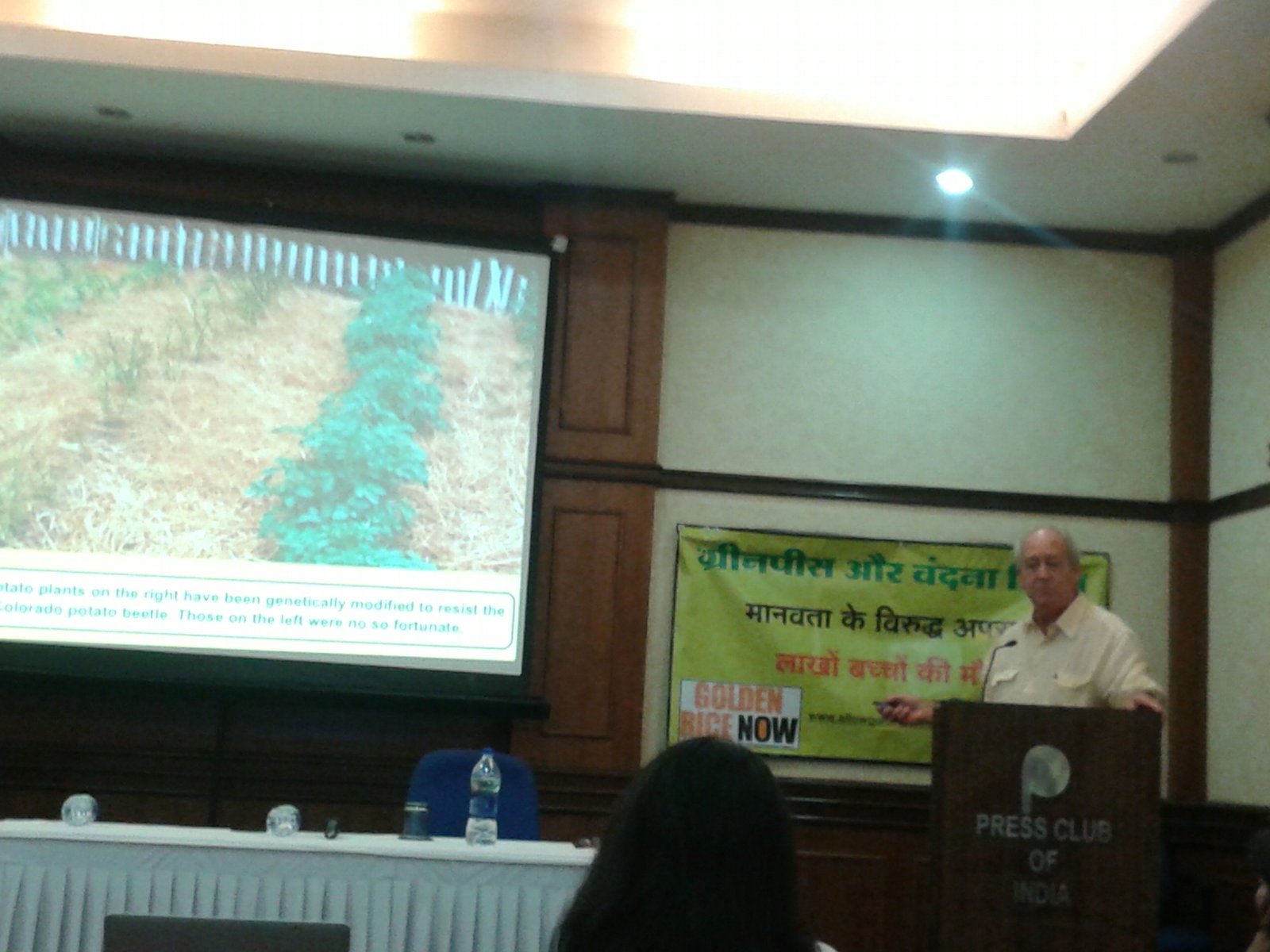"Greenpeace's opposition to Golden rice not justified"
March 17, 2015 | Tuesday | News | By Rahul Koul Koul
Greenpeace's opposition to Golden rice not justified
Dr Patrick Moore, former Greenpeace activist explaining the importance of Golden Rice in Indian context on March 16, 2015 at Delhi
According to the World Health Organization (WHO), Vitamin A deficiency (VAD) is the leading cause of preventable blindness in children and increases the risk of disease and death from severe infections. In pregnant women, VAD causes night blindness and may increase the risk of maternal mortality.
Now as a possible answer, Golden Rice is a new type of rice that contains beta carotene, a source of vitamin A, thus a potential new food-based approach to the issue. However, opposition from Greenpeace and NGOs has led to political pressure on respective governments in developing nations leading to reluctance to give a go ahead for its cultivation. The latest examples among these is China.
Visiting India as part of his 'Allow Golden Rice Now' campaign, Dr Patrick Moore, an international environmental leader and a founding member of Greenpeace, is trying to spread awareness on the issue. His campaign seeks to address the problem related to the high incidence of Vitamin A deficiency in India.
The Golden Rice Tour began with a field trip to the International Rice Research Institute near Manila, the lead agency internationally for the development of Golden Rice.
Dr Moore belives that had the Golden Rice been a cure for a disease like Malaria, Cancer, or Ebola, it would have been approved years ago. "It is time the international community intervened in this humanitarian tragedy. Our tour to promote the positive message of Golden Rice has been met with heavy resistance from anti-capitalist activists, 20 of which have joined forces to oppose our Indian leg of our tour," he said.
Dr Moore further added, "It is a testament to the uncaring attitude of Greenpeace and other NGOs that they will not drop their opposition to Golden Rice. Golden Rice has been proven to deliver vitamin A to both adults and children so there is certainty that it could save millions of lives. Can you imagine the grief of millions of poor parents who watch helplessly while their young children perish before their eyes?"
Vitamin A deficiency affects more than 35 million children globally including in India. Worldwide, about 2 million children die every year from diseases related to vitamin A deficiency, and between 250,000 and 500,000 go blind. Vitamin A deficiency is the biggest killer of children in the world today. Golden Rice is the obvious cure, but because it was created with genetic science, Greenpeace and the anti-GMO movement fervently oppose it. No country has approved it for cultivation
Economists from the Technical University of Munich and the University of California, Berkeley, have quantified the price of the opposition in terms of human health. The study, published in the journal Environment and Development Economics, estimates that the delayed application of Golden Rice in India alone has cost 1.4 million life years since 2002. This accounts not only for those who died, but also for the blindness and other health disabilities that Vitamin A deficiency causes. The majority of those who went blind or died have been children.
The Golden Rice Network includes eighteen national, developing country institutions in Bangladesh, China, India, Indonesia, Nepal, South Africa, Philippines, and Vietnam. The Network is under the strategic guidance of the Golden Rice Humanitarian Board and under the management of a network coordinator, based at the International Rice Research Institute (IRRI), in the Philippines.
Vitamin A deficiency is a public health problem in more than half of all countries, especially in Africa and South-East Asia, hitting hardest young children and pregnant women in low-income countries. Crucial for maternal and child survival, supplying adequate vitamin A in high-risk areas can significantly reduce mortality. Conversely, its absence causes a needlessly high risk of disease and death.










